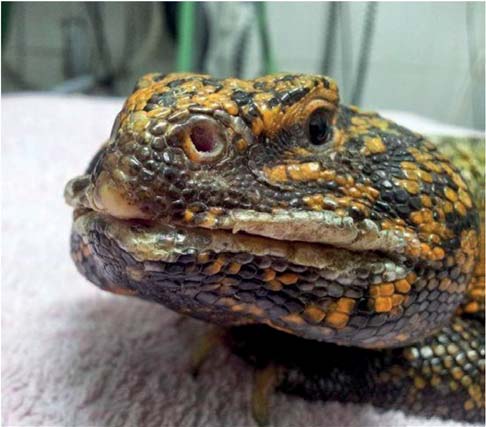Barazorda Romero S., Peková S., Pokorný, J. Devriesea agamarum u ještěrů chovaných v zajetí.
Veterinářství 2022;72(1):15-19.
SOUHRN
V následujícím článku popisujeme čtyři případy infekce bakterií Devriesea agamarum u tří druhů pouštních ještěrů. Diagnóza byla potvrzena pomocí Real-Time PCR analýzy. Ve třech případech byla přítomna hyperkeratotická dermatitida a cheilitida. Další zvíře bylo bez klinických příznaků. Jeden trnorep skalní (Uromastyx acanthinurus) a jeden trnorep zdobený (Uromastyx ornata) byli léčeni pomocí antibiotik, dezinfekce a debridementu krustózních lézí. Dále byla pravidelně prováděna dezinfekce prostředí. U prvního pacienta došlo po tříměsíční léčbě k uzdravení a eliminaci původce. U druhého pacienta léčba antibiotiky nedokázala eliminovat bakterie z organismu ani po pěti měsících. Léčba D. agamarum u zvířat trpících dermatitidou představuje obtížnou výzvu pro chovatele kvůli schopnosti bakterie přežívat několik let ve vlhkém prostředí a přítomnosti asymptomatických nosičů v chovu. Léčba by měla zahrnovat ošetření všech klinicky infikovaných zvířat a důkladnou dekontaminaci prostředí.
SUMMARY
In this presented article we described four cases of devrieseasis in three desert lizard species. The diagnosis was confirmed by Real-Time PCR analysis. In three cases hyperkeratotic dermatitis and cheilitis were present. Another animal was without clinical signs. One Uromastyx acanthinurus and one Uromastyx ornata were treated with antibiotics and debridement of crusted skin lesions. Furthermore, the enclosure was regularly disinfected. The first patient eliminated D. agamarum from the oral cavity after three months of treatment. However, in the second patient the antibiotic treatment failed even after five months. Treatment of D. agamarum in animals suffering from dermatitis represents a difficult challenge for breeders due to the ability of this bacterium to survive for several years in a humid environment and the presence of asymptomatic carriers in reptile collections. Treatment should include
administration of antibiotics to infected animals and frequent decontamination of the enclosure.




